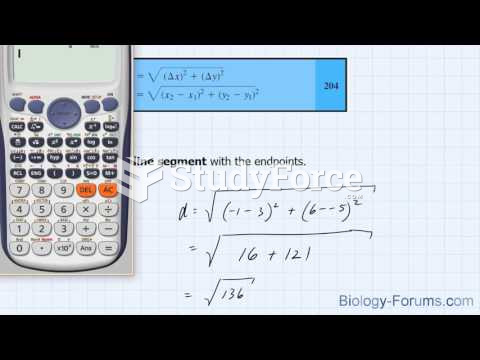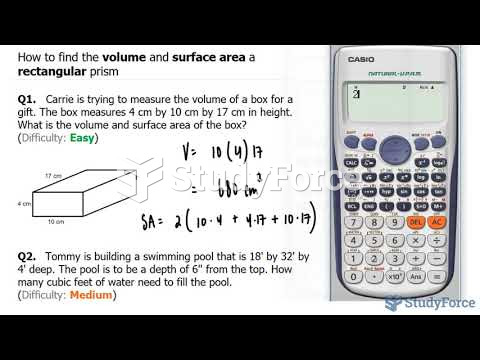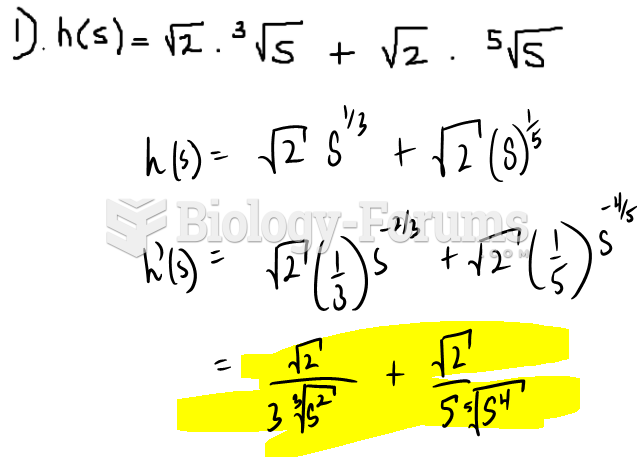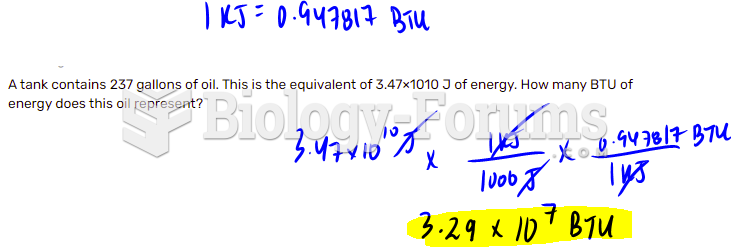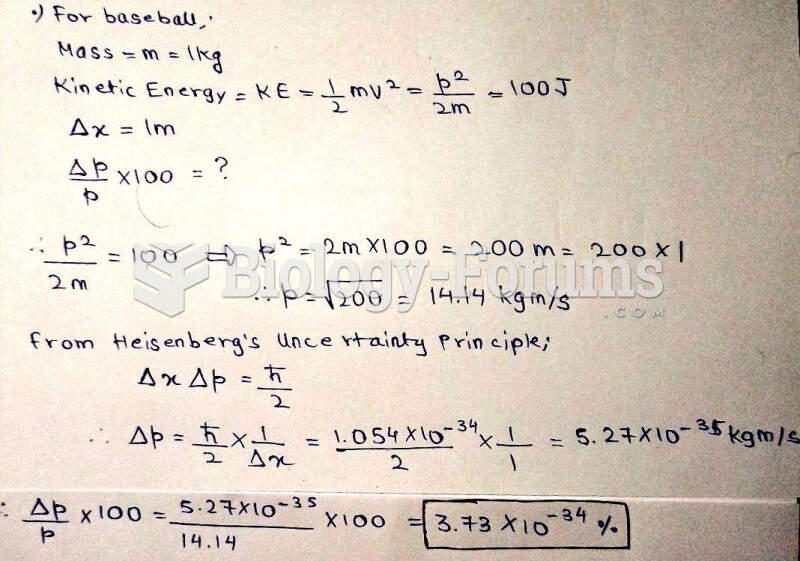Find the energy of a photon whose frequency is 5 1012 Hz.
Question 2
Ionization is a process whereby an atom acquires enough energy so that one or more of its electrons __________ from the nucleus.
Fill in the blank(s) with correct word
Question 3
An electron absorbing an ultraviolet photon will be ejected with a _________ energy than an electron absorbing a violet photon.
Fill in the blank(s) with correct word
Question 4
The energy of a photon is _________ proportional to its frequency and __________proportio nal to its wavelength.
Fill in the blank(s) with correct word
Question 5
A hot luminous solid emits a ______________ spectrum, while a hot luminous gas produces a ______ spectrum.
Fill in the blank(s) with correct word
Question 6
An atom is said to have been ________ when it absorbs a photon with sufficient energy to free an electron.
Fill in the blank(s) with correct word
Question 7
In the Bohr model of the atom, a photon may be _________ when an electron jumps from a large, high energy orbit to a smaller, low energy orbit.
Fill in the blank(s) with correct word
Question 8
Four different uses of lasers are __________, __________, __________, and __________,
Fill in the blank(s) with correct word
Question 9
In a laser the emitted light is __________.
Fill in the blank(s) with correct word
Question 10
Two devices that make use of the wavelike nature of electrons are the ______________ and the __________.
Fill in the blank(s) with correct word
Question 11
__________ in an x-ray spectrum of an atom occurs because of rapid deceleration of the bombarding electrons.
Fill in the blank(s) with correct word
Question 12
__________ in an x-ray spectrum of an atom occur because electrons in the atom make transitions to lower energy levels after being bombarded with high energy electrons.
Fill in the blank(s) with correct word
Question 13
When the frequency of the light is increased in a photoelectric effect experiment, the energy of the emitted electrons __________.
Fill in the blank(s) with correct word
Question 14
When the intensity of light is increased in a photoelectric effect experiment, the energy of the emitted electrons __________.
Fill in the blank(s) with correct word
Question 15
The person who developed the exclusion principle was __________.
Fill in the blank(s) with correct word
Question 16
The person who developed the concept of a wave function was __________.
Fill in the blank(s) with correct word
Question 17
The principal founders of the mathematical model of quantum mechanics were __________ and __________.
Fill in the blank(s) with correct word
Question 18
The person who expounded the uncertainty principle was __________.
Fill in the blank(s) with correct word
Question 19
The person who first explained the discrete hydrogen atom spectrum was __________.
Fill in the blank(s) with correct word
Question 20
The person who first explained the photoelectric effect was __________.
Fill in the blank(s) with correct word
Question 21
When something is restricted to having only certain numerical values, it is said to be ________________.
Fill in the blank(s) with correct word
Question 22
The person who first explained the blackbody spectrum was __________.
Fill in the blank(s) with correct word
Question 23
The peak of the radiation curve of a blackbody moves toward larger wavelength as its temperature __________.
Fill in the blank(s) with correct word
Question 24
The peak of the radiation curve of a blackbody moves upward toward higher intensity as its temperature __________.
Fill in the blank(s) with correct word
Question 25
In a blackbody, the __________ of the oscillating atoms is quantized.
Fill in the blank(s) with correct word
Question 26
A __________ is a three-dimensional image made using a laser.
Fill in the blank(s) with correct word
Question 27
In an energy level transition from the n = 2 state to the n = 1 state for a hydrogen atom a photon will be ___________.
Fill in the blank(s) with correct word
Question 28
The highest energy level in an atom corresponds to n = _________.
Fill in the blank(s) with correct word
Question 29
The lowest energy level in an atom is its __________.
Fill in the blank(s) with correct word
Question 30
The __________ states that a particle cannot be precisely localized.
Fill in the blank(s) with correct word
Question 31
Two things that are quantized in the Bohr model of the hydrogen atom are __________ and __________.
Fill in the blank(s) with correct word
Question 32
An atom can be excited into a higher energy state by absorbing a __________.
Fill in the blank(s) with correct word
Question 33
An excited atom can lose energy by emitting a __________.
Fill in the blank(s) with correct word
Question 34
A quantum of electromagnetic radiation is a __________.
Fill in the blank(s) with correct word
Question 35
The __________ occurs when electrons are emitted when light strikes the surface of a metal.
Fill in the blank(s) with correct word
Question 36
Laser light is ________ and monochromatic, and usually of much ________ intensity than the light from the light bulb.
a. coherent b. incoherent
c. lower d. higher
Question 37
Electrons in atoms
a. orbit the nucleus in well-defined circular orbits.
b. radiate electromagnetic energy continuously.
c. act as if spread out in a cloud around the nucleus.
d. behave as predicted by quantum mechanics.
Question 38
The mathematical model of quantum mechanics was principally founded by
a. Max Planck.
b. Albert Einstein.
c. Neils Bohr.
d. Erwin Schrdinger.
e. Werner Heisenberg.
Question 39
As the temperature of a blackbody increases, the peak of its radiation curve moves
a. upward toward higher intensity.
b. downward toward lower intensity.
c. toward larger wavelength.
d. toward smaller wavelength.
e. none of the above.
Question 40
Which of the following devices use lasers?
a. DVD players
b. fiber optics communication systems
c. photocopiers
d. UPC price scanners
Question 41
In which of the following energy level transitions for a hydrogen atom is a photon emitted?
a. n = 1 to n = 2
b. n = 3 to n = 2
c. n = 2 to n = 1
d. n = 1 to n = 4
e. n = 4 to n = 3
Question 42
According to the Pauli Exclusion Principle for n = 4, the occupation limit of electrons is
a. 4 b. 8
c. 16 d. 32
Question 43
The red line in the helium spectrum is closer to orange than the red line in the hydrogen spectrum, indicating that it has a higher frequency. Therefore, the photons of red light emitted by helium have __________ energy than those emitted by hydrogen.
a. lower b. higher
c. the same d. more ionization
Question 44
A population inversion is a circumstance within a laser system in which there are ______ atoms with their electrons in an upper excited state than in a specific preferred lower state.
a. more b. fewer
c. the same amount d. ionized
Question 45
The Balmer series of emission lines from hydrogen lie in the ________ part of the EM spectrum.
a. near infrared b. infrared
c. visible d. ultraviolet
Question 46
The energy of a photon that ionizes a hydrogen atom from the ground state will be _________ the energy of a photon that ionizes a different hydrogen atom from the first excited state (n 2).
a. larger than b. smaller than
c. equal to d. twice
Question 47
How small an object can a scanning tunneling microscope see?
a. about the size of a mushroom spore
b. about the size of a living cell
c. as small as a single atom
d. as small as the nucleus of an atom
Question 48
The aurora borealis (northern lights) are caused by
a. sunlight reflecting from polar ice.
b. emissions from atoms and molecules in the upper atmosphere excited by electrons from the Sun.
c. thunderstorms.
d. an unknown process.
Question 49
Lasers are used
a. to produce holograms.
b. in surgery.
c. to measure distances between objects accurately.
d. in DVD and compact disc players.
e. all of the above
Question 50
In a laser
a. light is amplified by stimulated emission of radiation.
b. the emitted light is monochromatic.
c. the emitted light is coherent.
d. there is a population inversion of electrons in atoms.
e. all of the above
Question 51
The continuous part of an x-ray spectrum of an atom occurs because
a. of photon absorption.
b. of the photoelectric effect.
c. electrons in the atom make transitions to lower energy levels.
d. of the uncertainty principle.
e. of rapid deceleration of the bombarding electrons.
Question 52
The characteristic peaks in an x-ray spectrum of an atom occur because
a. of photon absorption.
b. of the photoelectric effect.
c. electrons in the atom make transitions to lower energy levels.
d. of the uncertainty principle.
e. of rapid deceleration of the bombarding electrons.
Question 53
When the frequency of the light is increased in a photoelectric effect experiment, the energy of the emitted electrons
a. increases.
b. decreases.
c. stays the same.
d. becomes more quantized.
e. becomes less quantized.
Question 54
When the intensity of the light is increased in a photoelectric effect experiment, the energy of the emitted electrons
a. increases.
b. decreases.
c. stays the same.
d. becomes more quantized.
e. becomes less quantized.
Question 55
The person who developed the concept of a wave function was
a. Max Planck.
b. Albert Einstein.
c. Neils Bohr.
d. Erwin Schrdinger.
e. Werner Heisenberg.
Question 56
The person who expounded the uncertainty principle was
a. Max Planck.
b. Albert Einstein.
c. Neils Bohr.
d. Erwin Schrdinger.
e. Werner Heisenberg.
Question 57
The spectra of different elements can be distinguished because
a. they have the same spectral lines, but the lines are of different intensities.
b. they have spectral lines in different positions.
c. every element has one unique spectral line.
d. none of the above
Question 58
What is meant by a line spectrum?
a. a spectrum which is straight
b. a spectrum made of bright lines in certain places, separated by dark gaps
c. a spectrum made by a hot filament stretched into a straight line
d. none of the above
Question 59
The person who first explained the discrete hydrogen atom spectrum was
a. Max Planck.
b. Albert Einstein.
c. Neils Bohr.
d. Erwin Schrdinger.
e. Werner Heisenberg.
Question 60
Which of the following devices make use of the photoelectric effect?
a. digital cameras
b. photocopiers
c. laser printers
d. solar cells
e. all of the above
Question 61
The person who first explained the photoelectric effect was
a. Max Planck.
b. Albert Einstein.
c. Neils Bohr.
d. Erwin Schrdinger.
e. Werner Heisenberg.
Question 62
What quantities are plotted on a blackbody radiation curve?
a. total radiated energy vs. temperature
b. radiation intensity vs. wavelength
c. wavelength of peak emission vs. temperature
d. none of the above
Question 63
The person who first explained the blackbody spectrum was
a. Max Planck.
b. Albert Einstein.
c. Neils Bohr.
d. Erwin Schrdinger.
e. Werner Heisenberg.
Question 64
The quantity that is quantized in the oscillating atoms of a blackbody is
a. angular momentum.
b. energy.
c. the emission spectrum.
d. the absorption spectrum.
e. the wave function.
Question 65
What is coherent light?
a. light of a single wavelength
b. light that is all in phase
c. light that is polarized in one direction
d. none of the above
Question 66
Which of these is not involved in the operation of lasers?
a. stimulated emission b. population inversion
c. metastable state d. blackbody radiation
Question 67
A three-dimensional image made using a laser is a(n)
a. emission spectrum.
b. absorption spectrum.
c. wave function.
d. hologram.
e. photoelectric effect.
Question 68
Electron diffraction shows
a. that electrons behave like waves.
b. the photoelectric effect.
c. characteristic x-ray spectra.
d. that electrons in atoms have only certain allowed energies.
Question 69
If the speed of an electron increases, its de Broglie wavelength
a. increases. b. decreases.
c. stays the same. d. may increase or decrease.
Question 70
The highest energy level in an atom is its
a. ionization level.
b. emission level.
c. absorption level.
d. photon level.
e. ground state.
Question 71
The lowest energy level in an atom is its
a. ionization level.
b. emission level.
c. absorption level.
d. photon level.
e. ground state.
Question 72
What is excluded by the Pauli exclusion principle?
a. certain values of angular momentum
b. precise values of both position and momentum
c. electrons in the same quantum state
d. none of the above
Question 73
The fact that a particle cannot be precisely localized is the
a. photoelectric effect.
b. uncertainty principle.
c. principle of a hologram.
d. principle of a laser.
e. reason why photons are emitted.
Question 74
In the Bohr model of the hydrogen atom
a. energy is quantized.
b. the electron's angular momentum is quantized.
c. the emission spectrum is quantized.
d. the absorption spectrum is quantized.
e. all of the above
Question 75
An atom can be excited into a higher energy state by
a. emitting a photon.
b. absorbing a photon.
c. undergoing the photoelectric effect.
d. decreasing its de Broglie wavelength.
e. the uncertainty principle.
Question 76
An excited atom can lose energy by
a. emitting a photon.
b. absorbing a photon.
c. undergoing the photoelectric effect.
d. increasing its de Broglie wavelength.
e. the uncertainty principle.
Question 77
The energy associated with a photon of blue light is ________________ the energy associated with a photon of red light.
a. greater than b. less than
c. equal to d. unrelated to
Question 78
What does it mean for something to be quantized?
a. It can have only certain discrete values.
b. It can have only integer values.
c. It can have values only between certain limits.
d. none of the above
Question 79
A quantum of electromagnetic radiation is a
a. wave function.
b. photon.
c. de Broglie wave.
d. laser.
e. hologram.
Question 80
Electrons emitted when light strikes the surface of a metal is
a. photon emission.
b. photon absorption.
c. the photoelectric effect.
d. a laser.
e. an emission spectrum.
Question 81
When the speed of an electron is increased the de Broglie wavelength is decreased.
a. True
b. False
Indicate whether the statement is true or false
Question 82
The fact that two electrons cannot occupy the same quantum state at the same time is the Heisenberg exclusion principle.
a. True
b. False
Indicate whether the statement is true or false
Question 83
The aurora borealis is an example of atoms and molecules in the atmosphere absorbing photons and exciting the atoms and molecules to emit spectra.
a. True
b. False
Indicate whether the statement is true or false
Question 84
If an electron acquires more than the ionization energy, the electron will return to the ground state.
a. True
b. False
Indicate whether the statement is true or false
Question 85
UPC price scanners at supermarket checkouts use laser holography to read the bar codes because the packages are three dimensional.
a. True
b. False
Indicate whether the statement is true or false
Question 86
A laser can be used for very accurate measurements of distances between objects.
a. True
b. False
Indicate whether the statement is true or false
Question 87
Light being amplified by stimulated emission of radiation is the principle of the photoelectric effect.
a. True
b. False
Indicate whether the statement is true or false
Question 88
A laser emits monochromatic and coherent light.
a. True
b. False
Indicate whether the statement is true or false
Question 89
At any instant in time, it is possible to specify simultaneously the position and the momentum of a particle to arbitrarily high precision.
a. True
b. False
Indicate whether the statement is true or false
Question 90
The chemical composition of stars can be determined from lines in their spectra.
a. True
b. False
Indicate whether the statement is true or false
Question 91
The characteristic peaks in an x-ray spectrum of an atom occur because of rapid deceleration of the bombarding electrons.
a. True
b. False
Indicate whether the statement is true or false
Question 92
Characteristic peaks occur in an x-ray spectrum of an atom because electrons in the atom make transitions to lower energy levels after being bombarded with high energy electrons.
a. True
b. False
Indicate whether the statement is true or false
Question 93
Photocopiers make use of the photoelectric effect.
a. True
b. False
Indicate whether the statement is true or false
Question 94
When the frequency of the light is increased in a photoelectric effect experiment, the energy of the emitted electrons increases.
a. True
b. False
Indicate whether the statement is true or false
Question 95
As the intensity of light is increased in a photoelectric effect experiment, the energy of the emitted electrons increases.
a. True
b. False
Indicate whether the statement is true or false
Question 96
Two different gases may have the same emission line spectrum.
a. True
b. False
Indicate whether the statement is true or false
Question 97
There is a direct correlation between the absorption and emission spectra of a particular gas.
a. True
b. False
Indicate whether the statement is true or false
Question 98
Perfect absorbers of electromagnetic radiation are also perfect emitters.
a. True
b. False
Indicate whether the statement is true or false
Question 99
The energy of an oscillating atom in a blackbody can be any value within a certain limited range.
a. True
b. False
Indicate whether the statement is true or false
Question 100
The peak of the radiation curve of a blackbody moves toward larger wavelength as its temperature increases.
a. True
b. False
Indicate whether the statement is true or false
Question 101
The peak of the radiation curve of a blackbody moves upward toward higher intensity as its temperature increases.
a. True
b. False
Indicate whether the statement is true or false
Question 102
In a blackbody, the energy of the oscillating atoms is quantized.
a. True
b. False
Indicate whether the statement is true or false
Question 103
A 100 eV electron and a 100 eV proton have equal de Broglie wavelengths.
a. True
b. False
Indicate whether the statement is true or false
Question 104
An x-ray can be emitted when an electron undergoes an energy level transition.
a. True
b. False
Indicate whether the statement is true or false
Question 105
The highest energy level in an atom corresponds to n = 1.
a. True
b. False
Indicate whether the statement is true or false
Question 106
The ground state is the lowest energy level in an atom.
a. True
b. False
Indicate whether the statement is true or false
Question 107
The element helium was discovered by studying the Sun's spectrum.
a. True
b. False
Indicate whether the statement is true or false
Question 108
The early Solvay Conferences had a great effect upon the development of quantum mechanics.
a. True
b. False
Indicate whether the statement is true or false
Question 109
Electrons in atoms move about the nucleus in well-defined circular orbits.
a. True
b. False
Indicate whether the statement is true or false
Question 110
The uncertainty principle states that a particle cannot be precisely localized.
a. True
b. False
Indicate whether the statement is true or false
Question 111
In the Bohr model of the hydrogen atom both the energy and orbital angular momentum of the electron are quantized.
a. True
b. False
Indicate whether the statement is true or false
Question 112
In an energy level transition from the n = 2 state to the n =1 state for a hydrogen atom a photon will be emitted.
a. True
b. False
Indicate whether the statement is true or false
Question 113
An atom can be excited into a higher energy state by absorbing a photon.
a. True
b. False
Indicate whether the statement is true or false
Question 114
An excited atom can lose energy by emitting an electron.
a. True
b. False
Indicate whether the statement is true or false
Question 115
A photon is quantum of electromagnetic radiation.
a. True
b. False
Indicate whether the statement is true or false
Question 116
The photoelectric effect occurs when electrons are emitted when light strikes the surface of a metal.
a. True
b. False
Indicate whether the statement is true or false
Question 117
When an object is viewed through a magnifying glass, an object 20 cm high appears as an upright image 100 cm high. What is the magnification?


